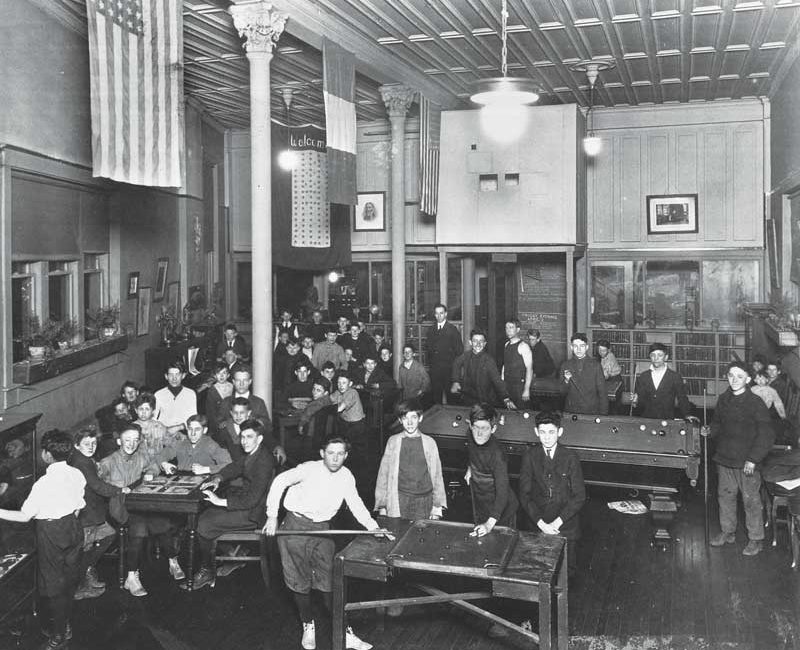
Backtrack: Boys’ Town
By the time this photo was taken, the humble one-story at Madison Avenue and South Meridian Street had been keeping boys out of trouble for more than two decades. In 1892, rumblings of a need to tend to the city’s newsboys had begun to grow louder. An Indianapolis Newsboys Home at 139 North Delaware Street, modeled after similar programs in New York and Chicago, was sponsored by some of the city’s most influential men but failed nonetheless. But by 1896, women of the Free Kindergarten and Children’s Aid Society had established a new group, by then called the Boys’ Club, that provided services and fun things to do for the city’s working boys. It was a place for playing games, putting on plays, movie screenings, and lessons on how to become good citizens. The kids also had the run of the pool tables in one of the rec rooms, shown here.
As the name implies, these clubs were for boys only—more precisely, white boys. Back when the Newsboys Home was just about ready for occupancy in 1893, the Indianapolis Journal recorded “considerable discussion” at a public meeting as to whether boys of color should be allowed into the home. The consensus: Both white and black boys must be cared for, but in different facilities. This was agreed to by “several representative” members of the local African-American community, reported the Journal. Black newsboys would start, at least, with their own separate home, financed by the same association that was formed to support the white newsboys’ facility.
That club seems to have fallen upon hard times, but the color barrier remained firmly in place at least through the 1920s. By 1928, The Indianapolis News was reporting that a club for African-American boys was “one of the most pressing needs of the city, according to juvenile court records.”
By 1966, four Boys’ Clubs existed in the city, offering game rooms, swimming pools, kitchens, craft shops, and playgrounds—no mention of pool tables.
It was 1989 before girls were allowed to join the clubs, and two years later, the organization changed its name to what it’s known as today: the Boys & Girls Clubs of Indianapolis.





